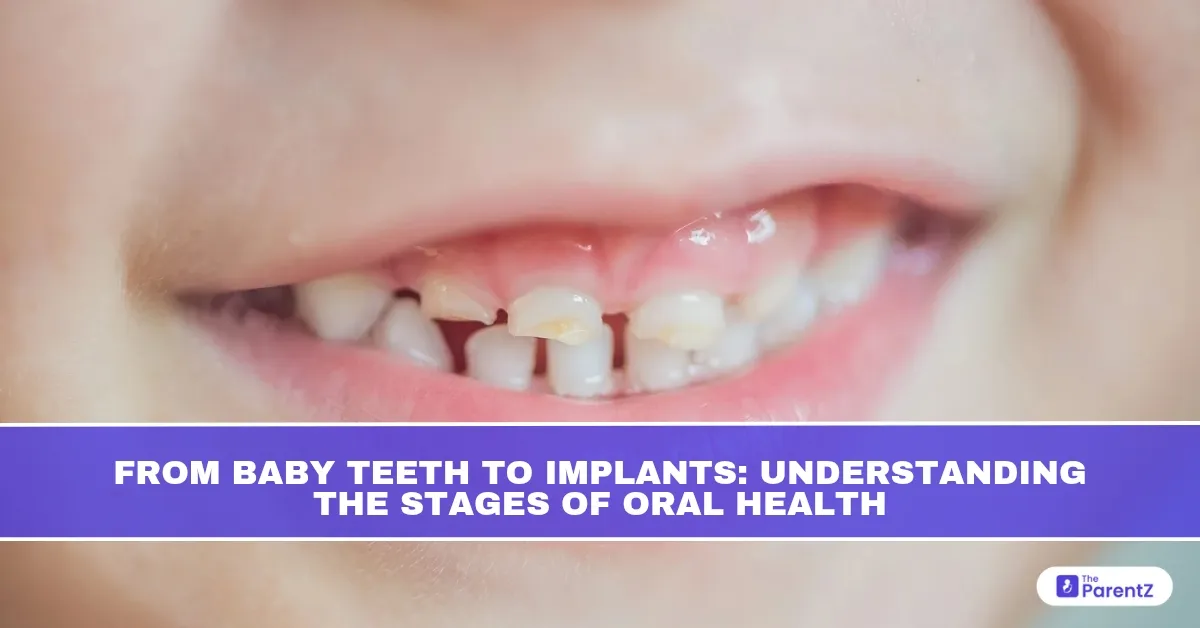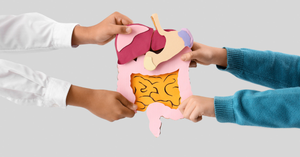Oral health is a lifelong journey, beginning with the eruption of baby teeth in infancy, followed by permanent teeth in childhood, and sometimes requiring dental implants or other restorative solutions in adulthood. Each stage comes with its own challenges, and proper care at every phase ensures a healthy and functional smile for years to come.
Understanding these stages helps parents protect their child’s developing teeth and allows adults to make informed decisions about oral health care, including options like implants, bridges, or dentures when needed.
Stage 1: Baby Teeth (Primary Dentition) (Ages 0-6 years)
Baby teeth, also known as primary teeth, start erupting around 6 months of age and are fully developed by age 3. These teeth serve as placeholders for permanent teeth and are crucial for early speech development, chewing, and facial growth.
Key Concerns:
Teething discomfort
Risk of early childhood cavities (baby bottle tooth decay)
Proper brushing habits
Oral Care Tips:
Clean gums with a damp cloth before teeth emerge.
Start brushing with a soft toothbrush and fluoride-free toothpaste at 6 months.
Avoid sugary drinks in bottles to prevent decay.
Schedule the first dental visit by age 1.
Stage 2: Mixed Dentition (Losing Baby Teeth and Growing Permanent Teeth) (Ages 6-12 years)
Around age 6, children begin losing baby teeth as permanent teeth emerge. This phase is known as mixed dentition because both primary and adult teeth are present.
Key Concerns:
Tooth loss affecting chewing and speech
Risk of misalignment or crowding
Increased risk of cavities due to inconsistent brushing
Oral Care Tips:
Teach kids to brush twice daily with fluoride toothpaste.
Encourage flossing to prevent cavities between teeth.
Regular dental checkups to monitor growth and alignment.
Consider space maintainers if a baby tooth is lost too early to prevent shifting.
Stage 3: Permanent Teeth (Adolescence and Early Adulthood) (Ages 13-25 years)
By the early teen years, most permanent teeth have emerged, except for wisdom teeth, which may appear in the late teens or early twenties. This stage is critical for establishing lifelong oral hygiene habits.
Key Concerns:
Orthodontic issues (crowding, gaps, bite problems)
Wisdom teeth complications (impaction, pain, infection)
Cavities and gum disease due to poor oral hygiene habits
Oral Care Tips:
Consider braces or aligners if necessary.
Monitor wisdom teeth development—they may need removal.
Avoid smoking and excessive sugar consumption to protect gums.
Continue regular dental checkups and cleanings.
Stage 4: Midlife Oral Health (Adulthood, 25-50 years)
By adulthood, teeth face wear and tear, and many people begin to experience gum recession, tooth decay, or even tooth loss due to injury, infections, or lifestyle habits.
Key Concerns:
Increased risk of gum disease (gingivitis & periodontitis)
Enamel erosion from acidic foods and beverages
Possible tooth loss due to decay, trauma, or disease
Oral Care Tips:
Maintain a balanced diet and limit acidic foods.
Use a soft-bristled toothbrush to prevent enamel wear.
Consider dental fillings, crowns, or implants if tooth damage occurs.
Regular dental visits to catch early signs of decay or gum disease.
Stage 5: Tooth Replacement Solutions (Late Adulthood and Beyond) (Ages 50+ years)
As people age, tooth loss becomes more common due to bone loss, untreated decay, or gum disease. Fortunately, modern dentistry offers several solutions to restore a functional smile, including dental implants, bridges, and dentures.
Key Concerns:
Bone loss in the jaw due to missing teeth
Difficulty chewing and speaking clearly
Aesthetic concerns affecting confidence
Tooth Replacement Options:
Dental Implants – A permanent, natural-looking solution that prevents bone loss.
Bridges – A fixed alternative for replacing one or more missing teeth.
Dentures – Removable replacements for multiple missing teeth.
Oral Care Tips:
Maintain regular dental visits for gum and bone health.
If using dentures, clean them daily to prevent infections.
Consider dental implants for a long-term, stable solution.
Conclusion
Oral health evolves throughout life, from baby teeth in early childhood to permanent teeth in adolescence and adulthood, and sometimes even dental implants or other restorations in later years.
Each stage presents unique challenges, but proper oral care and regular dental checkups can ensure a healthy smile for life. By staying proactive, you can protect your teeth at every phase and maintain strong oral health well into the future!








Be the first one to comment on this story.